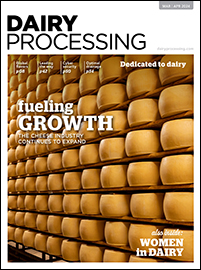WASHINGTON — The US Department of Agriculture (USDA) and the US Food and Drug Administration (FDA) issued a joint Request for Information (RFI) regarding food date labeling.
The RFI seeks information on industry practices and preferences for date labeling, research results on consumer perceptions of date labeling, and any impact date labeling may have on food waste and grocery costs.
“It has been estimated that confusion over the multitude of different date labeling terms on food products accounts for about 20% of food waste in the home” said FDA deputy commissioner for Human Foods Jim Jones. “The information collected will help us understand consumers’ perception of terms like ‘sell by,’ ‘use by’ and ‘best by.’
“We are looking forward to gathering valuable information to determine how date labeling can make it easier for consumers to know whether a food is still good to eat and avoid food waste. The FDA is committed to doing all that we can to support informed and sound decisions that are good for US consumers.”
The questions in the RFI include which products contain date labels, what criteria are used to decide what phrase to use and what date to include. It seeks to understand how consumers interpret date label information — especially if they believe the dates determine whether food is safe when, in fact, the labels indicate quality — and if labels impact decisions made when grocery shopping or discarding food. The questionnaire also explores if any relationship exists between date labels, food waste and household expenses.
The public has 60 days to comment on one or more of the 13 questions posed by the agencies.
Currently, FDA and USDA recommend food industry members voluntarily apply the “best if used by” quality-based food date label, which denotes the date after which quality may deteriorate but the product may still be consumed. Federal regulations do not prohibit the use of other date labeling phrases like, “sell by” or “use by,” if they are truthful and not misleading.
The issuing of the RFI is one of the agencies’ many actions taken in response to the National Strategy for Reducing Food Loss and Waste and Recycling Organics. The USDA estimates that the average family of four spends at least $1,500 each year on food that ends up uneaten, and the Environmental Protection Agency estimates that 66 million tons of wasted food was generated in food retail, foodservice and residential sectors in 2019.
The FDA and the USDA received more than 9,800 comments following the draft of the National Strategy for Reducing Food Loss and Waste and Recycling Organics, encouraging an update of the federal date labeling requirements, including standardizing date labeling.
The questions for commenters are posted online at the Federal Register’s website.

